More information about format requirements for thesis and dissertation documents can be found in the ASU Graduate College Format Manual.
Title Page
- Title: double-spaced, Title Case, center aligned
- “by”: double-spaced; all lowercase letters, center aligned
- Name: what is included in the ASU system
- Clause “A Thesis Presented in Partial Fulfillment”: 5 single line spaces after name
- Description: single-spaced; insert name of degree only
- Clause “Approved [Month] [Year] by the”: ten single line spaces after the degree
- Date: month and year of your oral defense; no comma
- Block 3: “Graduate Supervisory Committee” in title case followed by a colon (:); insert names of committee members; comma and space before Chair and CoChair
- University: ALL CAPITAL LETTERS
- Date: month (either May, August, or December)
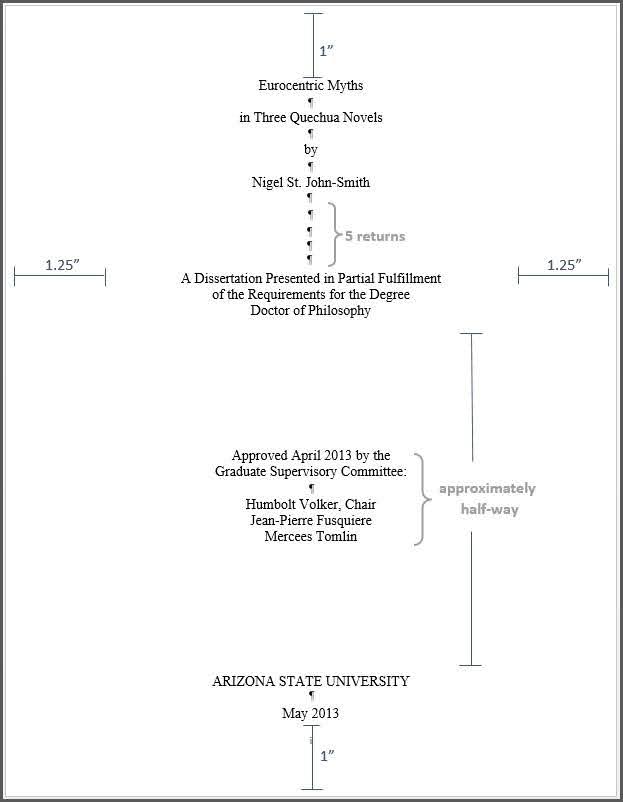
Note to Students in the School of International Letters and Cultures. Documents produced to fulfill the requirements of a Master of Arts degree, or a Doctor of Philosophy degree may be written in the language of the discipline. The foreign title should appear on the title page. The following page, labeled page i, should consist of the English translation of the abstract. Pagination continues on the next page with the abstract and rest of the document written in a foreign language.
Abstract
- Type ABSTRACT in all capital letters; not bolded, center aligned
- One double-space between “ABSTRACT” and text
- Double space all text following; no bold; no italics or underline (used only for species, genre, book titles, musical compositions, or foreign words and phrases)
- All acronyms or abbreviations must be written out fully at first use with acronym/abbreviation in parenthesis
- Must start on page i
- Do not exceed 350 words in length
- No first person plurals – ‘we’, ‘our’, ‘us’
- Do not include bibliographic citations

Note to Students in the School of International Letters and Cultures. If you compose your document in the language of your discipline (e.g. Spanish, German, or French) then you must include an extra abstract in English. See page 7 for more information.
Dedication and Acknowledgments (Optional)
Generally, the dedication contains a more personal note to family, loved ones and those who have helped students on their journey that may no longer be with us. While the acknowledgments usually consist of professional and academic assistance, the dedication and the acknowledgments should be on separate pages.
Please follow these guidelines:
- Double-spaced.
- The dedication and acknowledgments cannot exceed three pages combined.
- Headings: The dedication does not require a heading, but “ACKNOWLEDGMENTS” should be in all capitals and centered between the margins on the acknowledgments page.
- Text: The text of the dedication may be centered vertically on the page. The text of the acknowledgments should follow the indentation of paragraphs recommended by your style guide.
- The end of your acknowledgments is an excellent place to note sponsorship or funding for your research, i.e., military, corporate, etc.
Examples:
Dedication
1. To my family, for their patience, encouragement, and understanding.
2. Thank you to my family for always being by my side. Without you and your encouragement, it would be impossible for me to achieve my dream.
3. I would like to dedicate this achievement to my family for their unwavering support and love throughout my doctoral education. No effort on my part will be enough to thank you for the sacrifice you have made on my behalf.
Acknowledgments
1. As a student of ASU, I acknowledge that the Tempe campus sits on the ancestral homelands of those American Indian tribes that have inhabited this place for centuries, including the Akimel O’odham (Pima) and Pee Posh (Maricopa) peoples.
“In keeping with the design aspirations of the New American University, ASU seeks to embrace our place, connect with tribal communities, and enable the success of each American Indian student. We reaffirm the university’s commitment to these goals and acknowledge that everyone, the entire ASU community, is responsible for their achievement.” President Crow, August 31, 2015
2. I want to extend my gratitude to my committee for their guidance in my research and for taking the time to serve as committee members.
3. I would like to express my gratitude to my advisor for the opportunity to work on my research project and for their guidance and support throughout my doctoral journey. I would also like to sincerely thank my committee members for helping me develop my research and for providing valuable guidance and encouragement throughout my studies.
Table of Contents
(Chapter Format)
- Type TABLE OF CONTENTS in all capital letters; center aligned
- List preliminary pages that follow table of contents in ALL CAPITAL LETTERS
- Create headings “CHAPTER” and “Page” and include on subsequent pages
- Indent subheadings; use title case for all subheadings
- Double space
- Add leader dots between headings/subheadings and page numbers
- Use all CAPITAL LETTERS for chapter titles or sections headings
- Right-align page numbers
- No bold or underlined typeface (Italics may be used only for genus and species names, book titles, musical compositions, or foreign words and phrases)
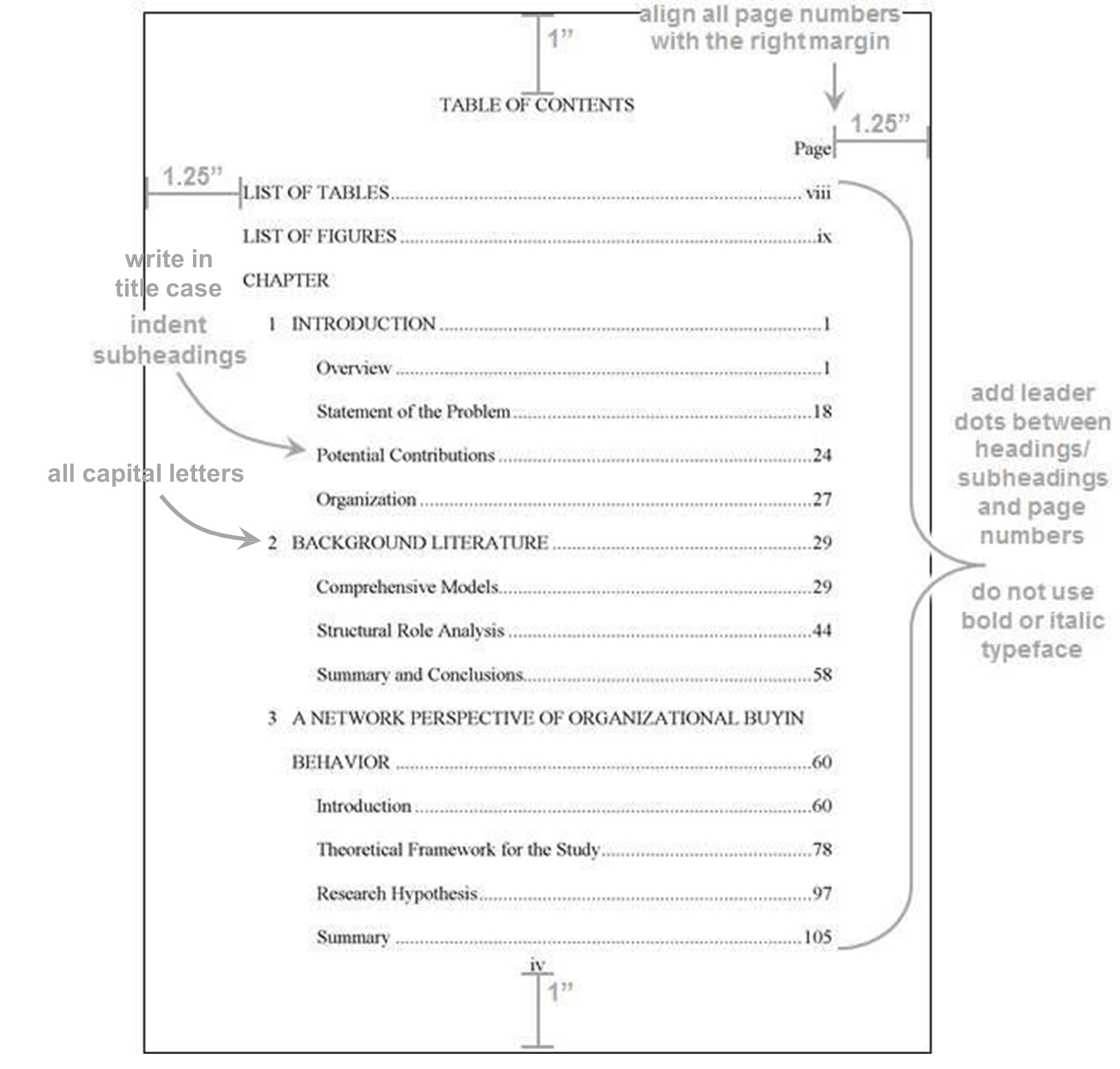
- Continue on subsequent pages if necessary
- Ensure headers appear on subsequent pages
- Include APPENDIX header in all capital letters before listing appendices
- List appendices in all CAPITAL LETTERS
- Do not include subheadings for appendices
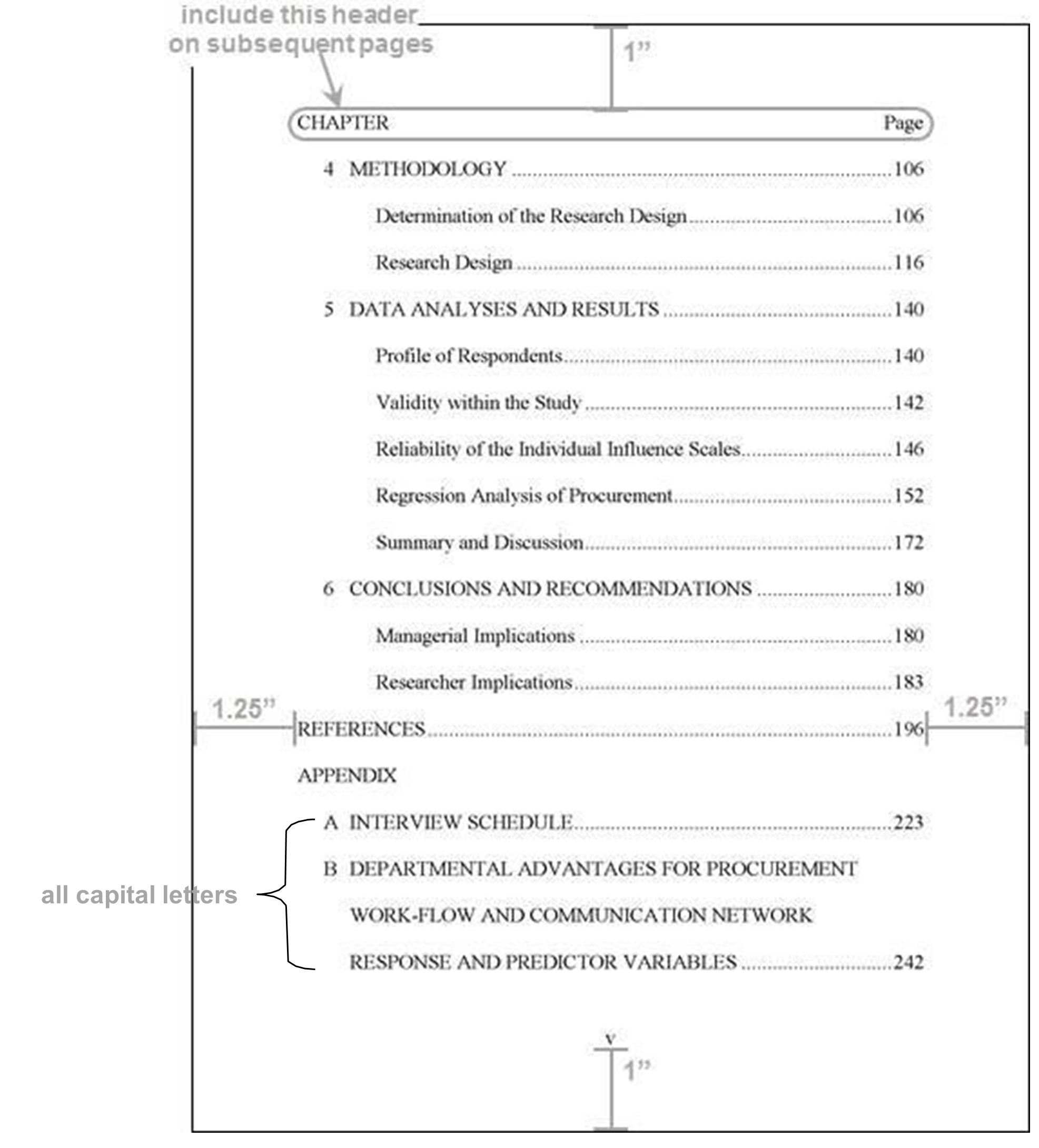
Table of Contents
(Alternative Format)
- Create heading "Page" as shown below
- Ensure headers appear on subsequent pages
- Double space
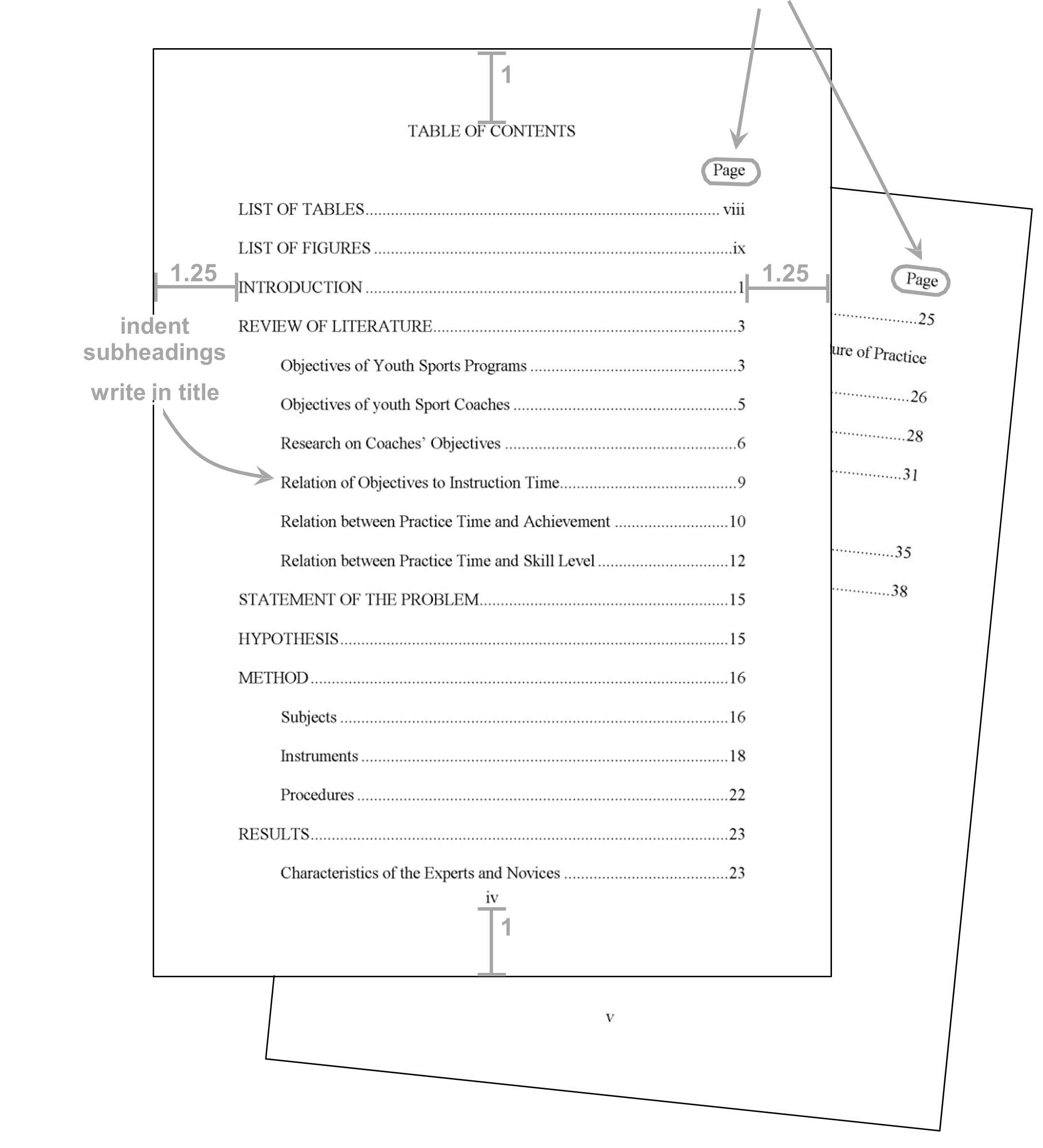
List of Tables, List of Figures, and Other Lists
- Follow same format as table of contents
- Create headers reading “Table”/”Figure” and “Page”
- Ensure headers appear on subsequent pages
- Double space
- No bold or underlined typeface (Italics may be used only for genus and species names, book titles, musical compositions, or foreign words and phrases)
- Use title case for captions
- Other lists (terms, nomenclature, etc.) should be formatted similarly

Tables and Figures
Refer to your style guide for the formatting of tables (including borders), table titles, and figure captions, including placement, typeface, alignment, and wording. You may need to reduce the size of a table or figure to meet the margin requirements, which may require using smaller size type within the table or figure, As a general guide, you may refer to the figure below, a sample table in Chicago style. Tables extending over multiple pages should be placed in an appendix.
For continued figures or tables, follow your style guide for treatment of captions/titles.
Place the figures and tables directly where intended for your document. Format Advisors do not edit the format and layout of your document.
Make sure to check the layout of your document, especially in regards to placement of tables, figures, and text throughout the format process. Avoid splitting a table or figure on multiple pages if it can fit on one page by adjusting the spacing and layout of text.
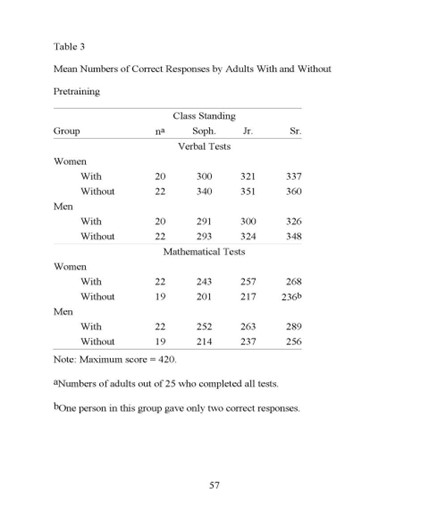
Horizontal (Landscape) Table
- Double space above page number
- Notice page number placement

References
Style guides and journals vary widely in the treatment of references. Your comprehensive list of references also may be called “Works Cited” or “Bibliography,” but certain requirements apply to the list regardless of its name. Your style guide determines the format for all entries and their overall organization; therefore, you must be familiar with the style of citations and references used by your journal or style guide, ensuring that it addresses all of your source types. Please be aware that some style guides provide more than one option for reference style, depending on the discipline (e.g., humanities or sciences), so you will want to choose the option that is best suited to your discipline.
- The reference list should be single spaced with one additional line space separating each reference from another.
- It is fine to have references listed after each chapter but a comprehensive references page must also be included at the end of the document (before appendices)
- Avoid splitting a reference entry between two pages.
Example:
Nation, K., & Snowling, M. (2004). Beyond phonological skills: Broader language skills contribute to the development of reading. Journal of Research in Reading, 27, 342–356.
Riedel, B. (2007). The relation between DIBELS, reading comprehension, and vocabulary in urban first-grade students. Reading Research Quarterly, 42(4), 556-567.
Swanson, H., Rosston, K., Gerber, M. & Solari, E. (2008). Influence of oral language and phonological processing on children’s bilingual reading. Journal of School Psychology, 46, 413–429. doi:10.1016/ j.jsp.2007.07.002.
Wiley, T., & Wright, W. (2004). Against the undertow: The politics of language instruction in the United States. Educational Policy, 18(1), 142–168.
When you submit your document for format review, the advisor will check your citations for consistency, but you must complete a more thorough check to guarantee the order of references and the completeness of entries in relation to your style guide, and to ensure that the information you provide to your readers is accurate and that you are not plagiarizing per https://graduate.asu.edu/current-students/policies-forms-and-deadlines/ academic-integrity. You will also want to verify that your reference list entries match any coinciding in-text citations. You are ultimately responsible for the completeness and accuracy of your references.
Appendices
- Designate each appendix with a letter (“APPENDIX A”) or Roman numeral (“APPENDIX I”)
- Include a descriptive title in ALL CAPITAL LETTERS
- Provide a separate cover page for each appendix (see figure below)
- No bold, italics, underline (used only for species, genre, book titles, musical compositions, or foreign words and phrases)
- List appendix titles in the table of contents (see table of contents page)
- If your research includes human subjects or animal subjects, you must include the appropriate approval documents in an appendix
- Any copyright permission should also be included
- If you are including non-print media/supplementary files as one or more appendices, include a cover page for each element with the text “[Consult Attached Files]” below the appendix title. If the supplementary file is an uncommon file type and requires a specific software or operating system to access it, the following line should make a note of it.
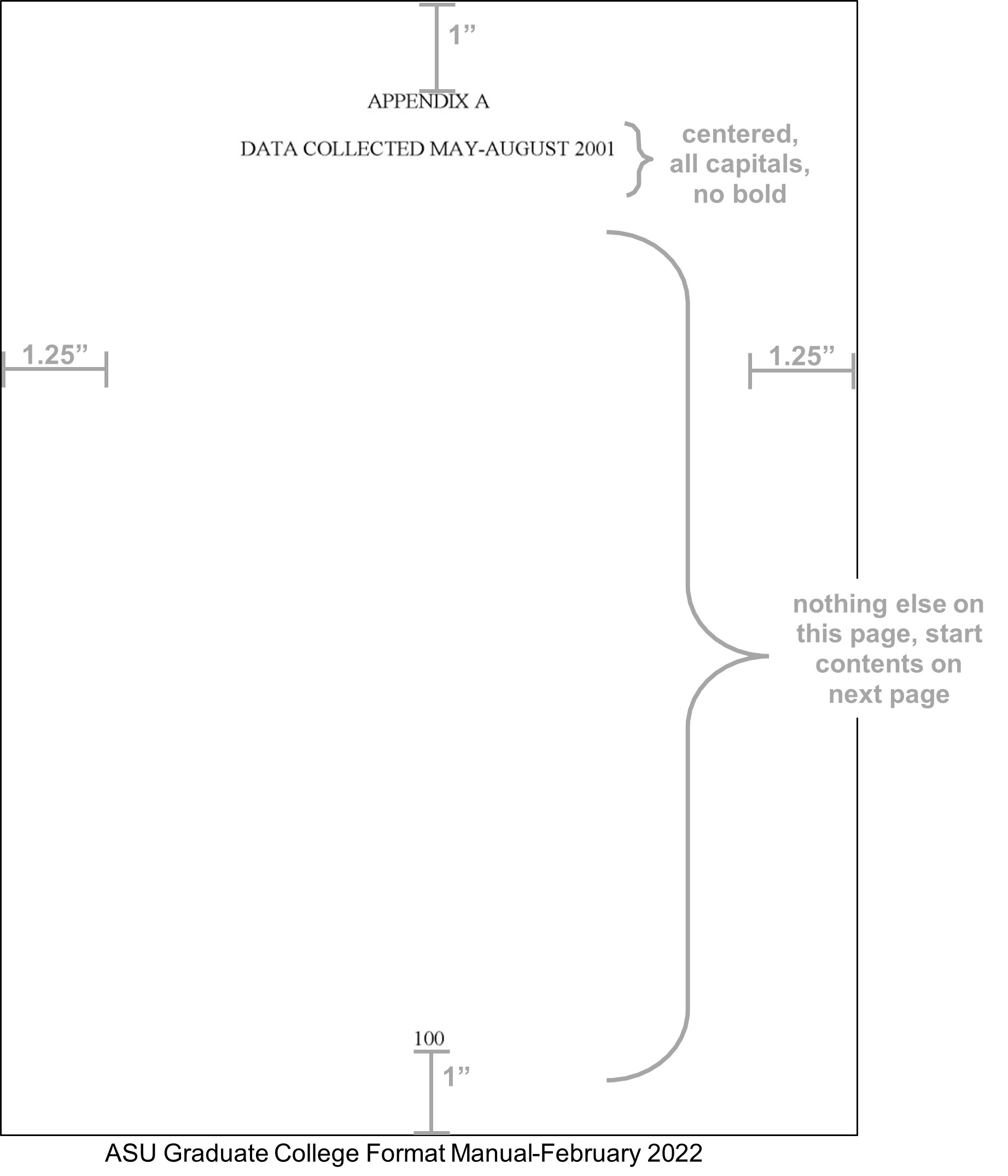
Biographical Sketch (Optional)
- Included if common in your discipline, recommended by your committee, or important to you
- One single-spaced paragraph; indent per style guide
- Double space between heading and text
- Present in a professional tone; past tense is most commonly used
- No bold or underlined typeface (Italics may be used only for genus and species names, book titles, musical compositions, or foreign words and phrases)

Degrees with Exceptions and Special Format Requirements/Procedures
Thesis/Dissertation Equivalents
Some graduate degree programs require students to produce written projects that are not called “theses” or “dissertations.” If you are pursuing a degree in one of these programs, be sure to substitute the proper wording on the title page of your document as indicated below:
Exceptions to “Thesis” and “Dissertation” on the Title Page Degree Name of Document
- D.M.A in Conducting - A Research Paper
- D.M.A. in Music Performance - A Research Paper
- M.F.A. in Creative Writing - A Practicum
- M.F.A in Dance - A Bound Document
Documents Containing Separate Studies or Papers where the Student is the Author or Co-Author
Do not use the first person plural (i.e. “we,” “our,” or “us”) since theses and dissertations may not be co-authored. For more information regarding copyrights and permissions visit Copyright Library Guide. For more information regarding the use of previously published/publishable collaborative work, refer to the Policy on using Previously Published/Publishable Work in a Culminating Experience Document.
Including Non-print Media with Theses/Dissertations
Supplemental non-print materials should be listed as appendices in your table of contents. The appendix cover sheet must also be marked with a description of the software and operating system (e.g., MAC or Windows XP) required to view the nonprint file if it is an uncommon file type.
You may upload supplementary files that accompany your document. Examples might be sound clips or spreadsheets of research data. You can upload as many supplementary files as you need. If you upload a set of files that are “zipped”, then that is how the supplemental material will be distributed with the full text: as a zipped file.
Keep in mind that information or software included in supplementary files must not violate any copyrights.

